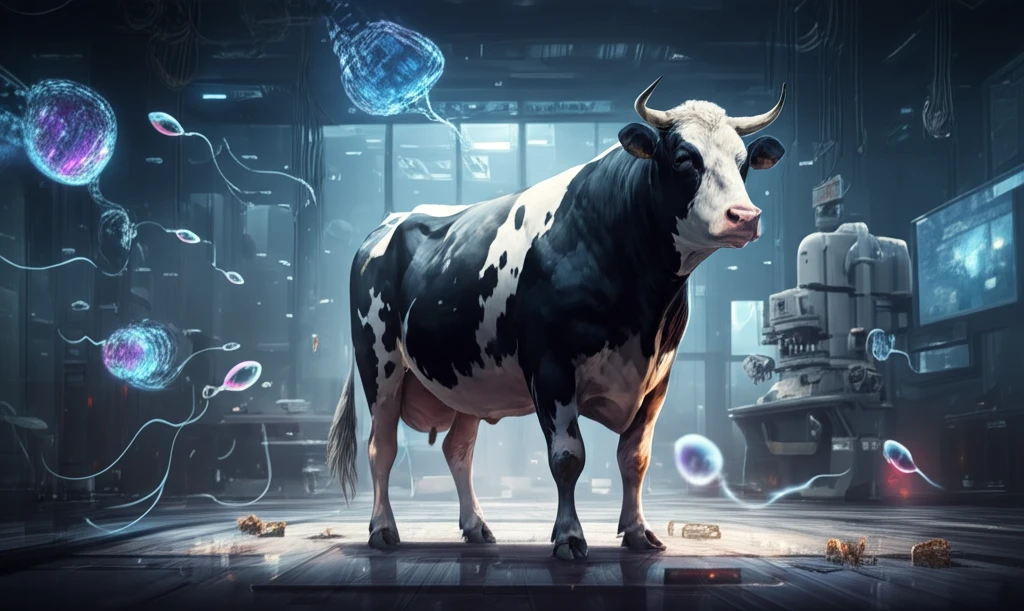
Unlocking Fertility: A Comprehensive Guide to Semen Quality in Holstein Bulls
"Discover how age and individual bull variations impact semen quality and frozen semen production, optimizing breeding strategies for healthier herds."
In the dairy industry, maximizing productivity hinges on efficient reproduction. Artificial insemination (AI) is a cornerstone of modern dairy farming, allowing breeders to enhance genetic traits and improve herd health. The success of AI programs, however, depends significantly on the quality of frozen semen, which in turn is influenced by factors like bull age and individual characteristics.
Understanding the nuances of semen quality—from volume and motility to concentration and overall production—is crucial for AI centers aiming to optimize their operations. High-quality semen ensures better fertility rates and stronger offspring, directly impacting dairy yields and profitability.
This article delves into a comprehensive study conducted at Lembang and Singosari AI Centers in Indonesia, examining how age and individual bull variations affect semen quality and frozen semen production in Holstein bulls. By exploring these factors, we aim to provide actionable insights that can help AI centers and dairy farmers improve their breeding strategies.
How Do Age and Bull Characteristics Impact Semen Quality?

A study was conducted using data from 81 Holstein bulls aged 1 to 9 years, who were used as frozen semen producers between 2008 and 2016. The researchers looked at several key variables: age of bulls, fresh semen volume, sperm motility, mass movement, concentrations, and the number of frozen semen doses produced at each age. The data was analyzed to determine the impact of age and individual bull variations on these factors.
- Semen Volume: Semen volume tends to increase with age, peaking around 7 years old.
- Sperm Concentration: After 3 years of age, sperm concentration typically begins to decline as the bull ages.
- Frozen Semen Production, Mass Movement, and Motility: These factors showed similar trends, with optimal values generally observed between 3 and 9 years of age. Notably, bulls aged 1 to 2 years showed increased values in these areas.
Optimizing AI Strategies for Better Semen Quality
Understanding the factors that influence semen quality is crucial for optimizing artificial insemination (AI) programs. By focusing on key parameters such as semen volume, sperm motility, and concentration, AI centers can significantly improve their semen production and breeding outcomes. Tailoring management practices to suit the age and individual characteristics of Holstein bulls can lead to more efficient and effective AI programs, ultimately enhancing dairy productivity and profitability.
